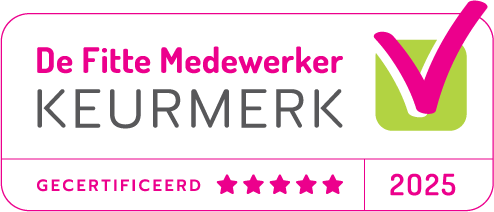The werks of chair Massages at work
A chair massage at work has several perks for both employees and employers. From the employee's perspective, a chair massage is an excellent way to relieve tension that can accumulate during the day at the workplace. Sitting at a desk for long periods can lead to muscle stiffness, soreness and pain, especially in the neck, shoulders, and back.
In addition to physical benefits, massages can also have mental health benefits. Massage has been shown to reduce levels of the hormone cortisol which causes stress and anxiety and increase the levels of feel-good hormones such as dopamine and serotonin. This can lead to a reduction in depression and other negative emotions.
Furthermore, a chair massage is an excellent example of teambuilding. They will appreciate the chair massage and be willing to work a little harder. Because they get the recognition of their work and they feel more appreciated.
From an employers perspective, offering chair massages at work can be an excellent way to boost employee morale and productivity. By providing an opportunity for employees to take a break and reduce cortisol, employers can create a more positive and supportive work environment. This can lead to happier employees, reduced absenteeism, and higher levels of productivity. The employees will feel more appreciated once they see how valuable they are for their company. A perfect way for a company to show their appreciation for their employees is by offering a chair massage every once in a while.
How does a chair massage work?
Is you never had a chair massage, you may wonder what to expect. A chair massage typically lasts between 10 and 30 minutes, depending on the needs of the client. The massage is performed while the client is seated on a specially designed massage chair that provides support for the head, breast, and arms. The clients remain fully clothed during the massage, and no oils or lotions are used.
The massage therapist uses a combination of techniques, including kneading, tapping, and stretching, to work on the muscles in the upper body. These techniques help to release tension and promote relaxation. The massage therapist may also use acupressure techniques to work on specific points in the body, helping to stimulate circulation and relieve pain. Especially for employees working at a desk, a chair massage is the perfect idea.
The massage therapist will usually ask the clients about any areas of the body that are tense or sore. This information helps the therapist to fit the massage to the client's needs. The client's preferences are always leading. The masseuse can adjust the massage to be more or less intense.
After the massage, the employee will usually feel relaxed and refreshed. Some people may feel a little sore or tender in the areas that were worked on, but this should subside within a few hours.
How to relieve tension from the workday
One of the primary reasons why people need chair massages at work is to relieve tension and muscle stiffness that can build up during the workday. Sometimes this can even cause a huge headache. If the chair massage isn't an option, there are several ways to relieve some tension at work.
Breaks are important
Take breaks: Taking short breaks throughout the workday can help to relieve. Take a break every hour or two. Even is it's just a few minutes. Take a deep breath, get a cup of coffee or simply close your eyes for a few seconds.
Relaxtion techniques
Practice relaxation techniques: Relaxation techniques such as deep breathing, meditation, and yoga can help to reduce anxiety and tension. Consider taking a class or using an app to help you learn these techniques. Maybe you and your coworkers can visit an event about relaxation.
Daily stretches
Stretch: Stretching can help to relieve tension and improve flexibility. Take a few minutes each day to stretch the muscles of your whole body. But focus on the upper body. If you want to get all of the perks, stretch during your workday. You can stretch at your desk or you can take a short break.
Keep the masses regular
Get regular massages: Getting regular massages can help to relieve tension and makes you more relaxed. Consider scheduling a monthly massage to help you unwind. By given a massage, your blood starts flowing and all the toxins will be flushed out of your body.
Self care is a must
Practice self-care: Taking care of yourself is essential for managing tension and muscle stiffness. Make sure you are eating a healthy diet with enough vegetables, fiber and proteïne, getting enough sleep at least 7 hours per night, and taking time to do things you enjoy. A lot of tension builds up in the upper body. Make sure you will stretch daily to get the tension out.
Talk to someone if needed
Talk to a therapist: If you are experiencing high levels of cortisol, consider talking to a therapist. They can provide you with a technique for managing the cortisol levels and improving your overall well-being.
Daily routine
By incorporating these tips into your daily routine, you can help to relieve tension from work. Chair massages at work can also be an effective way to promote relaxation, so consider scheduling a massage.


























